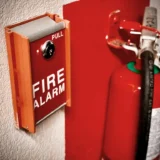Fire safety is often the most neglected part of facility operations until tragedy strikes. A recent report from the Karnataka Legislative Assembly revealed an alarming fact: out of 8,728 hospitals across the state, only 329 have valid fire safety approval. That is just 3.7 percent of all hospitals.
The data further shows that only 14 out of 2,878 government hospitals and 315 out of 5,850 private hospitals meet fire safety norms. The remaining over 8,000 facilities, including several district and taluk-level hospitals, are operating without compliance certificates.
These are not small clinics, they are institutions responsible for hundreds of patients, staff, and visitors each day. For a sector built on healing, such gaps in safety readiness represent an urgent call for change.
The Alarming Gap: Numbers That Speak for Themselves
According to government estimates, it would cost around ₹550 Crore to upgrade all hospitals across Karnataka to meet the National Building Code (NBC) fire safety standards.
Out of 30 districts in the state, 22 have less than 10 hospitals with fire safety certification.
Even Bengaluru Urban, which has one of the highest hospital concentrations in India, has fewer than 90 hospitals that have received official clearance.
In 2024 alone, three fire incidents were reported in hospitals across Karnataka, including one that forced the evacuation of an entire ICU ward. These incidents highlight a frightening truth — the lack of fire preparedness is not theoretical, it’s real, recurring, and dangerous.
Why So Many Hospitals Fail to Comply?
Old Infrastructure:
Many government-run and smaller hospitals operate from buildings that were constructed decades ago, without dedicated fire exits or modern electrical systems. Retrofitting these structures is both expensive and complex.
Limited Funding and Delays:
While the state has acknowledged the issue, hospitals cite funding shortages and administrative delays in completing audits and upgrades.
Lack of Continuous Monitoring:
Safety certifications often remain a one-time process rather than an ongoing responsibility. Many hospitals fail to renew or revalidate their fire safety approvals.
Low Awareness and Training:
Staff training and mock drills are still rare, meaning that even minor incidents can escalate quickly due to unpreparedness.
The True Cost of Poor Safety Management
The absence of basic fire safety doesn’t just risk infrastructure, it risks human life and institutional credibility. When an emergency strikes, seconds matter. A missing alarm, a blocked exit, or an untrained staff member can turn a manageable situation into a disaster.
Beyond the immediate risk, there are long-term consequences:
- Legal penalties and license suspensions
- Operational downtime and financial losses
- Permanent damage to reputation and trust
Hospitals are built to heal, but without safety, they can quickly become sites of chaos.
Nanya’s Perspective: Safety Begins with Prevention
At Nanya, we view safety not as a checkbox but as a culture. Our integrated facility management approach ensures that fire safety protocols are continuously monitored, updated, and maintained.
Our process includes:
- Comprehensive fire safety audits and compliance tracking
- Routine maintenance of fire alarms, extinguishers, and sprinklers
- Regular mock drills and evacuation planning
- Energy and ventilation system assessments for overheating prevention
- Transparent reporting and documentation to meet compliance standards
Sustainability and safety go hand in hand because a building cannot be considered efficient if it is not secure.
The Way Forward
Karnataka’s situation reflects a national challenge that demands immediate attention. The state has already initiated measures to tighten audits and approvals, but true change will come only when organizations treat fire safety as part of everyday facility management not just a government mandate.
Every hospital, office, and public building must adopt preventive maintenance and predictive monitoring as the foundation of safety.
At Nanya, we don’t wait for emergencies, we prevent them.
Talk to our team to make your facility safer, compliant, and future-ready.
👉 Visit www.nanya.llc
Frequently Asked Questions(FAQs):
1. Why do most hospitals in Karnataka lack fire safety approval?
Many hospitals operate in old buildings that were never designed for modern safety standards. Limited funding, delayed audits, and lack of regular inspections are key reasons for poor compliance.
2. How many hospitals in Karnataka have valid fire safety certification?
According to official data, only 329 of 8,728 hospitals across Karnataka have valid fire safety approval — that’s less than 4 percent of all healthcare facilities.
3. What is the estimated cost to make all hospitals fire-safe in Karnataka?
Government estimates suggest that around ₹550 crore would be needed to upgrade hospitals across the state to meet fire safety norms.
4. What are the main risks of poor fire safety management in hospitals?
Lack of proper systems can lead to major loss of life, property, and reputation. Even a small electrical fault or oxygen leak can trigger large-scale emergencies in healthcare settings.
5. How does Nanya help improve fire safety and facility compliance?
Nanya conducts comprehensive safety audits, ensures routine equipment maintenance, and trains staff to respond to emergencies effectively. Our proactive approach helps organizations stay compliant and safe at all times.































